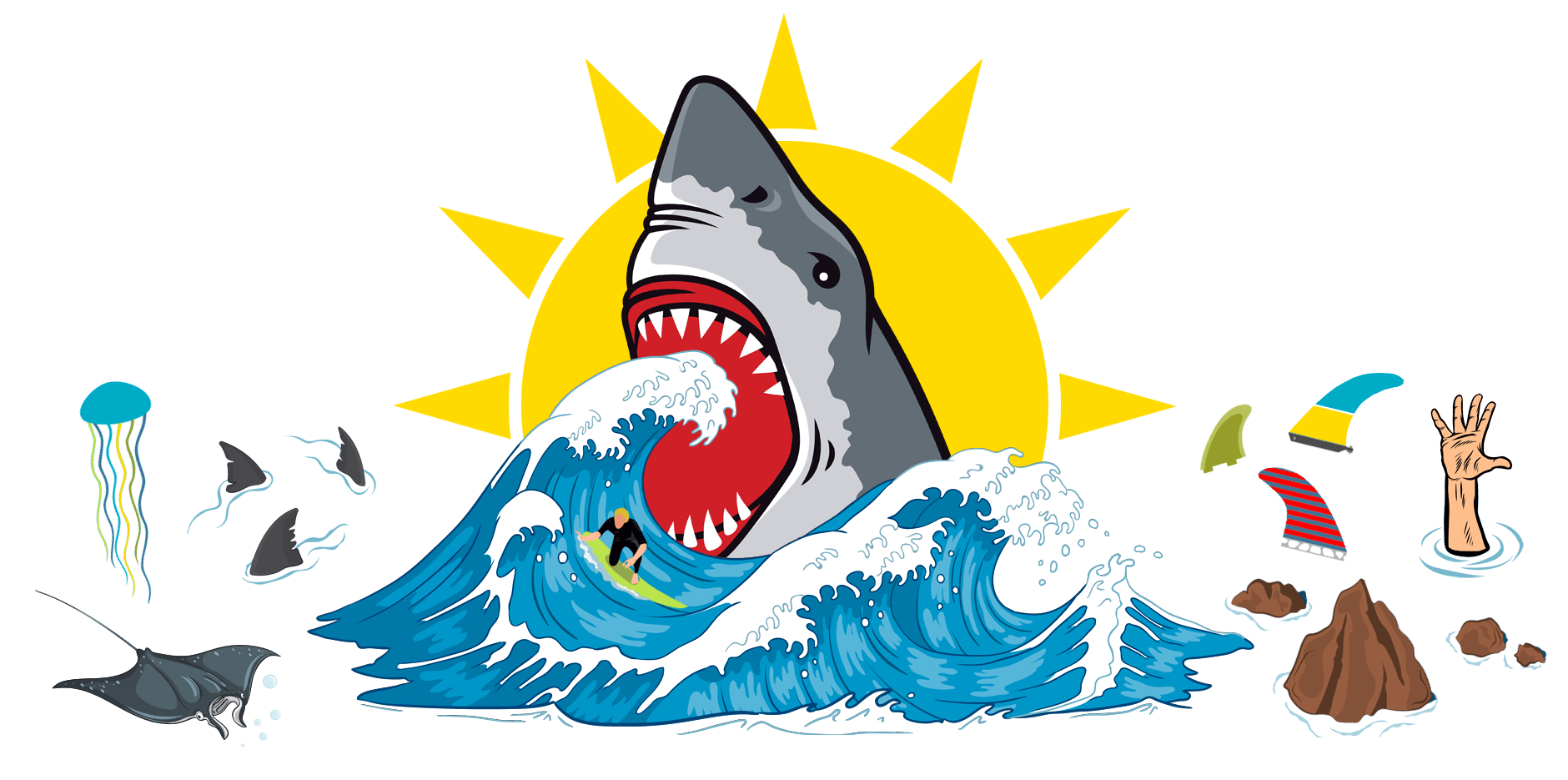
The biggest danger with surfing is getting into the ocean without getting educated first! Surfing's main purpose is to provide fun, of course, but it can cause serious injury or even death for the uneducated surfer. There will always be dangers while surfing (no matter what level surfer you are) - understanding these dangers, and knowing how you can possibly prevent them, will go a long way in keeping you safe in the water.
Following are some of the dangers you might encounter while surfing in Taiwan:
1. Rip Currents
2. Changing Tides
3. Sea Bed
4. Waves
5. Marine Life
6. Surfing Alone
7. Your Leash
8. Kooks, Crowds, & Beachgoers
9. Surfboards
10. The Elements

Most drownings at the beach are caused by rip currents, and according to the Taiwan Ministry of Interior, National Fire Agency, there were an average of 207 drownings (fatal and non-fatal) per year at sea in Taiwan between 2017 and 2021.
A rip current is a strong current that flows from the shoreline toward the ocean, perpendicular or at an acute angle to the shoreline. Rip currents usually occur near shorelines with breaking waves, with the current being the strongest and fastest near the surface of the water. Rips can be very dangerous, even to experienced surfers and swimmers, so it’s essential to understand them, be able to recognize them, and know how to manage them.
Rip currents can look like a “road” or “stream” running straight out to sea, most easily identifiable when viewed from a high vantage point. Following are some common identifiers of a rip current:
• A break in the white water of the waves, making the water look flat at the surface of the rip current, contrasting with the lines of breaking waves on either side of the rip.
• A "stream" of foam on the surface of the water, as the rip current is carrying foam from the broken waves back out to open water.
• The rip may have a different color than the surrounding water, often more opaque, cloudier, or sandier.
• If there is trash or other floating debris on the surface of the water, the debris might get caught in the rip current and carried out to open water.
Safely negotiate rip currents by doing the following:
• Stay calm and conserve your energy. Relax, control your breathing, and allow the current to carry you until it dissipates beyond the breaking surf line.
• Once you are past the breaking waves, swim back to shore where the waves are breaking, diagonally away from the rip current. If you are not a strong swimmer, and once in calmer waters, you can raise your arm and call out for help. Note that rip currents do not pull you under water, so don't worry about that!
• If you are a strong swimmer and still in a rip current, swim parallel to the shore. Do not try to swim against the rip back to shore, as you will quickly exhaust yourself (this is how most people drown while caught in a rip current). Once out of the rip (they usually aren’t very wide), swim diagonally away from the rip and let the breaking waves take you back to the shore.
As a surfer, once you understand rip currents and know how to navigate them, you can use them to your advantage. Rips can help surfers more quickly and easily paddle to the outside. Surf spots like Fulong, where there is a man-made jetty, the rip current acts like a conveyor belt, allowing surfers to easily paddle to the outside. Please note that Fulong has a notoriously strong rip, especially on bigger days, so it is not recommended to surf there unless you are in good physical shape and are able to negotiate powerful rip currents!
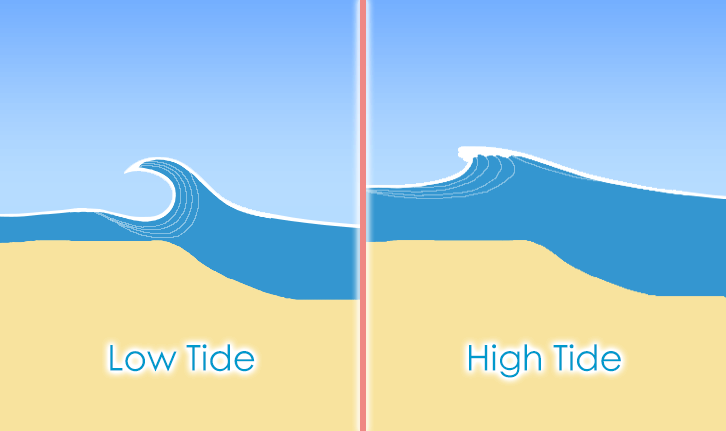
Changes in tide go hand-in-hand with rip currents, as rips usually begin forming when the tide is dropping (low tide). In addition to being a potential risk of being pulled out to sea, when the tide drops the waves typically become steeper, break faster, and break further out.
As the tide rises and falls, waves will hit the coast in either deeper or shallower water, causing the waves to break differently. Low tide waves are typically faster and more powerful, and barrels are more likely. Low tide waves also typically closeout more quickly, requiring quicker takeoffs and surfing speed. Additionally, it’s typically more difficult to paddle to the outside during lower tides. All of these factors make surfing at low tide more challenging and dangerous to less-experienced surfers. As you gain more surfing experience, you'll find it less difficult surfing the more challenging conditions at low tide.
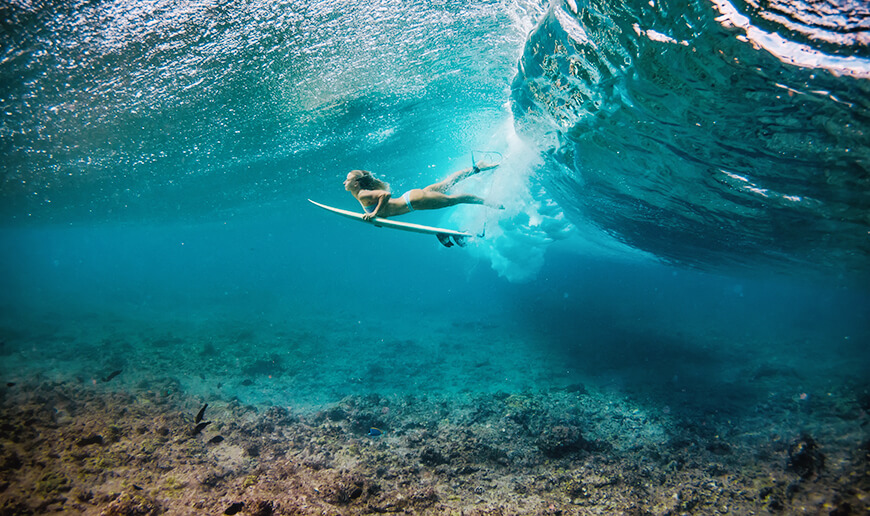
Even when surfing a sandy beach break, the force of a heavy wave crashing down on you will make that packed sand feel like solid concrete. Beginner surfers should always begin at a break with a sand bottom.
A rock bottom is like concrete and will likely cause more injury than a sand bottom since it is usually much more jagged. Once you become an intermediate surfer, you can try breaks with a rock bottom, but take extra caution when you wipe out.
Hitting a coral reef bottom is the worst of all, as coral is typically razor sharp, will cut you up, put tiny bacteria into your cuts, and infect you for weeks! Only experienced surfers should be surfing coral reef breaks.
How to Wipeout Safely
Kick Your Surfboard Away from Your Body
As you wipeout, push-kick your board forward (opposite to where your body is heading). Never kick it towards the wave.
Fall Correctly
As you wipeout, try and fall to the side or back of your surfboard. Also, try to keep your body flat (unless you're pin-dropping into the face of a steep wave). It's usually safest to wipe out butt first, never enter the water head first!
Take a Breath
As you're falling, take in a deep breath, in preparation for being under water after wiping out.
Tuck in Your Legs
As you hit the water, tuck your legs in to make yourself as small as possible. This will help prevent hitting anything submerged below the water.
Protect Your Head
While under the water, use your arms and hands to cover your head and face. This will protect you from being struck by your surfboard (or someone else's!).
Surface Cautiously
While surfacing, keep your head covered. Once you know where your board is, grab it and paddle back out (paddle wide to the outside of surfers!).
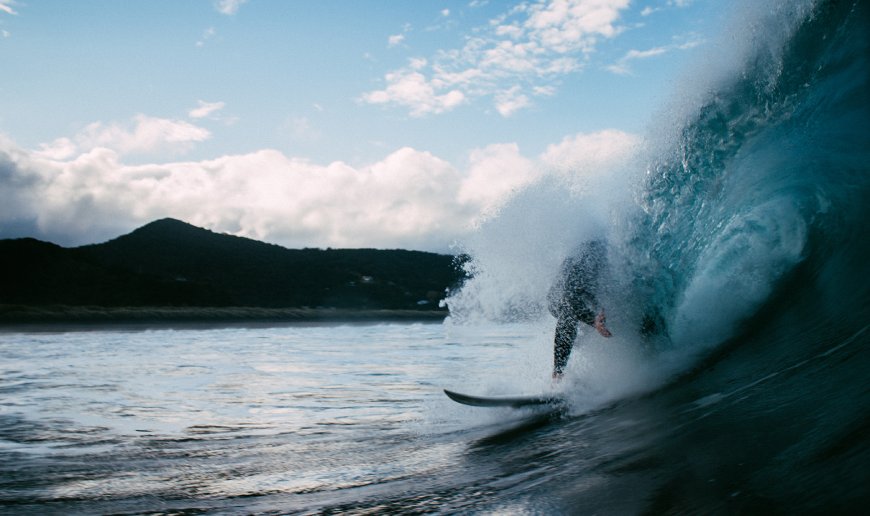
This is an obvious one, but one that needs mentioning. Before you get in the water, the most important thing is to know you're surfing limitations. Everyone wants to surf that typhoon swell, but you have to pay your "surfing dues" before you can get there! Trying to surf in conditions that are beyond your skill level will not only put you in harm's way, but will also put every other surfer in harm's way.
Waves can be deceiving, and what you see on a surf forecast is not always what you experience in the ocean. Most surf forecasts show "Significant Wave Height," which is the average of the highest one-third (33%) of waves (measured from trough to crest). Approximately 14% of waves will be higher than the Significant Wave Height (approximately 1 in every 7 waves) and you can expect a wave of twice the height of the significant wave approximately 3 times in 24 hours. You need to be prepared for a wave of this height before heading out into the water! To learn more about wave height, please check out "How to Read a Surf Forecast, Part 2".
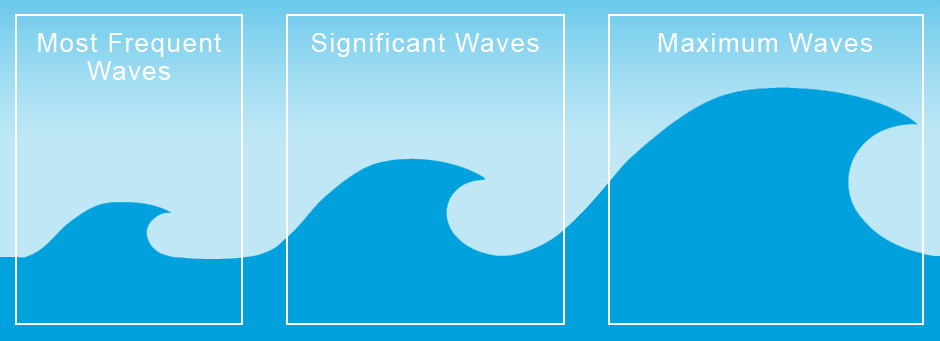
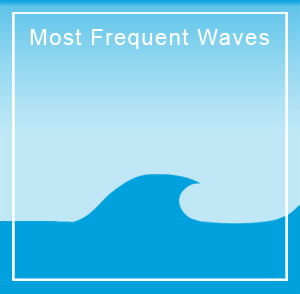
Most Frequent Waves
The most frequent wave height will be about half the height of the significant wave.
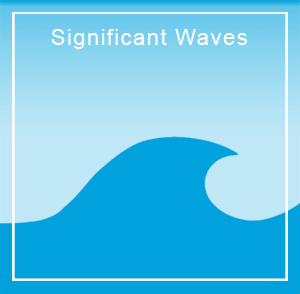
Significant Waves
Approximately 14% of waves will be higher than the Significant Wave Height (approximately 1 in every 7 waves).
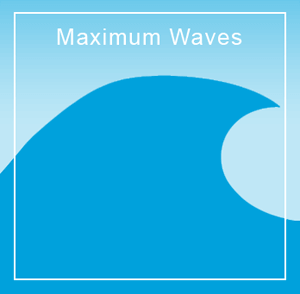
Maximum Waves
It is normal to expect a wave of twice the height of the significant wave approximately 3 times in 24 hours. You need to be prepared for a wave of this height before heading out into the water!

Probably the biggest fear of every new surfer is that of a giant 20-foot great white shark swallowing you and your surfboard whole while swimming off into the depths of the sea! The reality is that there is a higher risk of a vending machine falling on you and killing you (really!) than there is of being killed by a shark while surfing. There definitely are sharks in the waters around Taiwan, but chances are extremely low that you will ever encounter one while surfing. Don't focus on it (easier said than done, right?) and just enjoy the water. The more you surf, the less you will think about sharks. Now if you are surfing in "sharky" locations like Jeffreys Bay (South Africa), Réunion Island (France), or even Hawaii, you might encounter a shark or three.
Here's what you can do if you see a shark while surfing:
1. Get out of the water.
That seems obvious, but if the shark is far enough away and you are close to land, get out of the water ASAP!
2. Punch the shark in the nose.
If a shark is nearby and swimming directly towards you, punch it in its nose with your fist. As the nose is a sensitive part of a shark's body, the shark will likely swim away, giving you more time to get out of the water.
3. Stick your fingers in the shark's eyes and gill slits.
If a shark has you in its jaws, stick your fingers in its eyes and gill slits, clawing at them aggressively. This may make the shark open its mouth and release you.
You are more likely to get attacked by a jellyfish in Taiwan, especially during the summer. Most jellyfish stings are harmless, aside from the pain of the sting. However, there are some very poisonous jellyfish, like the box jellyfish that can kill an adult human within 3 minutes. Luckily for us, that species of jellyfish is mostly found in the waters of northern Australia and Indonesia.
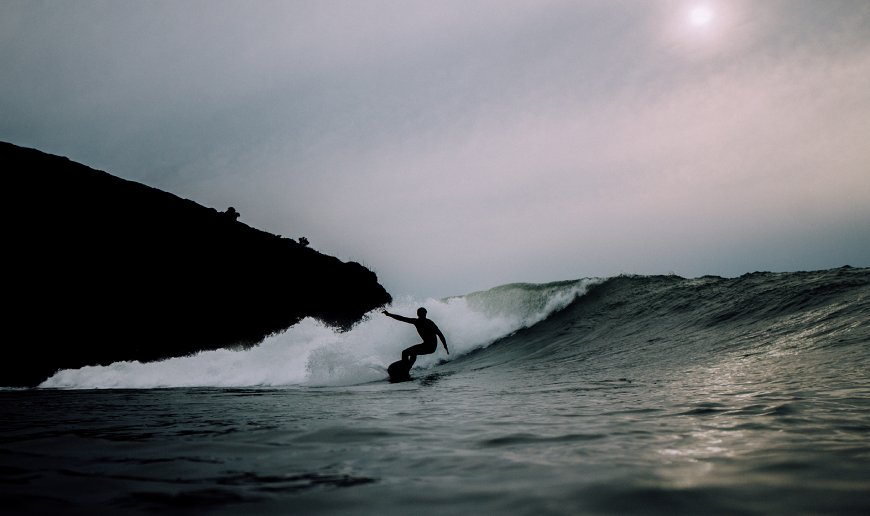
Nobody likes surfing with a million other surfers vying for the same wave as you, and surfing alone can be an exciting experience. However, it's always safest to surf with at least one other person in the water with you. If you surf alone and, for example, hit your head on the sea bottom, or become unconscious some other way, you will drown in the water all alone. On the other hand, if there is at least one other surfer with you, he or she can notice your situation and take the necessary steps to save you. Find a surf buddy, if you can.
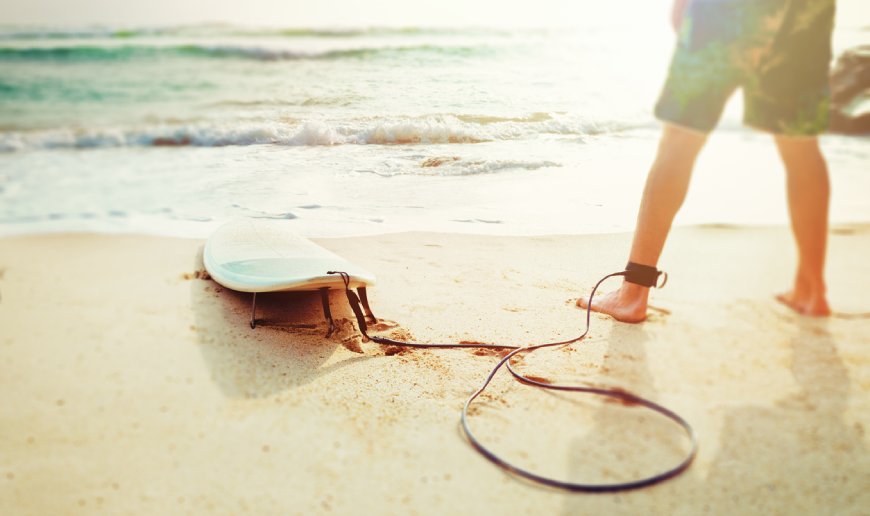
You've undoubtedly had your leash wrap around your leg while surfing. It's not only annoying, but it can also injure you or worse choke you under the right conditions. Your leash could also get caught on rocks, coral, or even seaweed on the sea bottom, making it difficult or even impossible for you to swim to the surface. It's best to buy a good leash with a swivel and a quick-release mechanism.
Leash with Quick Release
A quick-release on your leash's ankle strap will allow you to easily detach from your leash if necessary.
Leash with Swivel
The swivel promotes free range of movement while also reducing entanglement. Most leashes have either a single or double swivel. Do not purchase a leash without at least a single swivel.
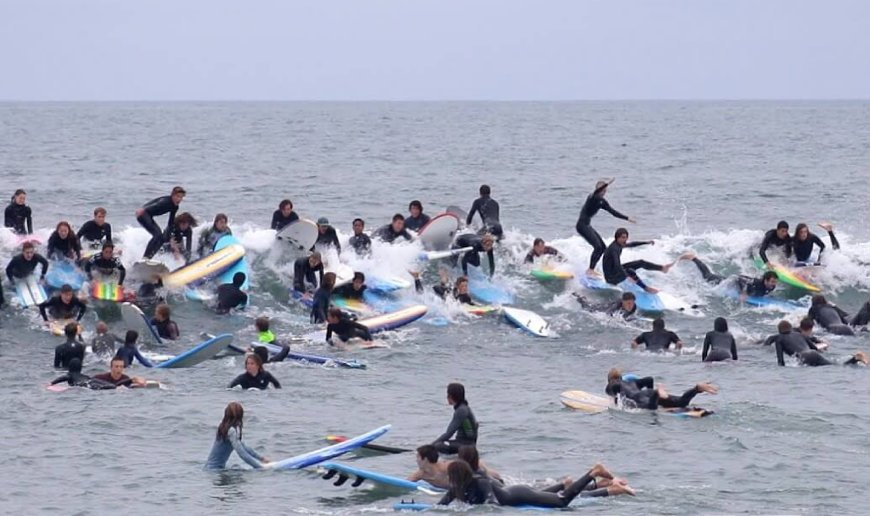
Everyone starts out as a beginner (or a "kook" if you like!). Even Kelly Slater was a kook when he started (don't tell him we said so!). Of no fault of their own, inexperienced surfers tend to get in the way. They aren't trying to, they just may not know proper surf etiquette or just don't have the surfing skills to get out of the way. More experienced surfers have a few options: They can do their best to avoid newbie surfers, they could surf a different peak or break, or they could try to teach proper surf etiquette to the newbies. We like the last option, as it will reduce injuries and increase stoke!
The more surfers there are in the water, the more dangerous your session will be. Have you ever surfed Wushi Harbor in the summer? Ever try to count the number of surfers on one wave or the number of boards flying in the air? Needless to say, it's a dangerous place to surf, even for the best of surfers.
There will also be swimmers and other people standing in the water, closer to the beach. Most of them will be completely oblivious that you're surfing a wave and about to run them over with your board. Be aware of those "clueless" beachgoers, and do your best to avoid them.
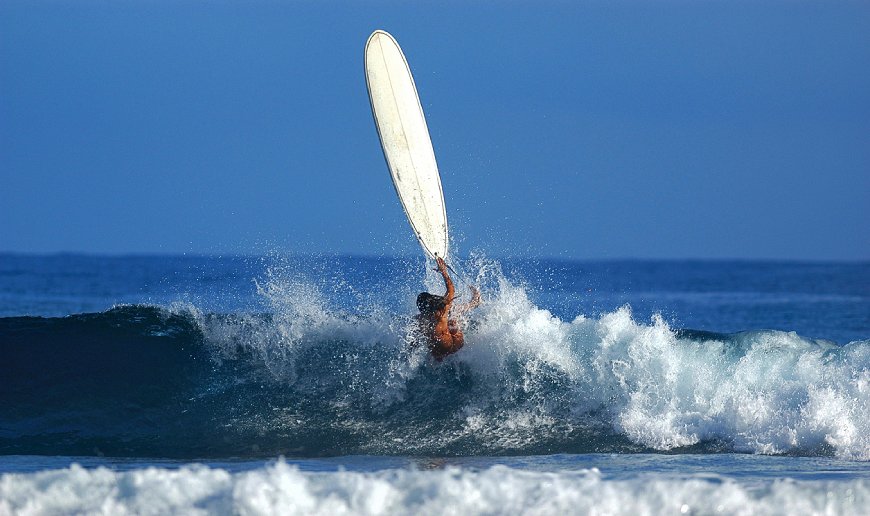
Surfboards are large, heavy, sometimes pointy, and have knife-like things called fins on the bottom. Needless to say, they can easily injure you. Take it from one of us, who had his big toe cut in half by a fin and three broken foot bones from one surfboard accident.
Try to keep control of your board when wiping out (no ditching!), for your safety and the safety of others in the water.

Protect yourself from Mother Nature. Before getting in the water, check the current UV index and apply water-proof sunscreen. Our current surf reports show the highest UV index for the day, usually peaking between 10 am and 2 pm.
UV Index Scale
0 to 2: Low
No protection needed. You can safely surf using minimal sun protection.
3 to 7: Moderate to High
Protection needed. Generously apply broad-spectrum SPF-15 or higher sunscreen on exposed skin, and wear a rash guard.
8+: Very High to Extreme
Extra protection needed. Generously apply broad-spectrum SPF-30 or higher sunscreen on exposed skin, and wear a rash guard and hat. Try to avoid surfing during late morning through mid-afternoon (10 am - 3 pm).
UV Index Scale
0 to 2: Low
No protection needed. You can safely surf using minimal sun protection.
3 to 7: Moderate to High
Protection needed. Generously apply broad-spectrum SPF-15 or higher sunscreen on exposed skin, and wear a rash guard.
8+: Very High to Extreme
Extra protection needed. Generously apply broad-spectrum SPF-30 or higher sunscreen on exposed skin, and wear a rash guard and hat. Try to avoid surfing during late morning through mid-afternoon (10 am - 3 pm).
We're not trying to scare new surfers out of the water with this article (or are we?!). However, it's important to understand that there are serious risks that come with surfing. Knowing those risks and how to avoid them is essential for every surfer. The more knowledgeable surfers there are in the water, the safer and more fun surfing will be for everyone. Now go get in the water ... and don't forget your sunblock, your surf buddy, and your surf report!